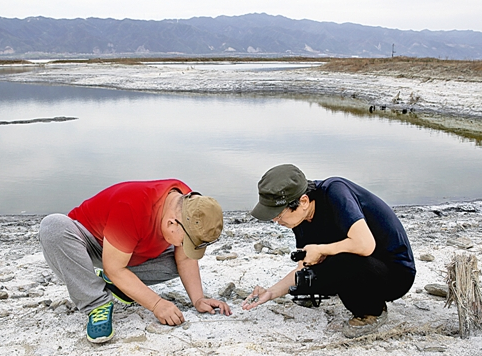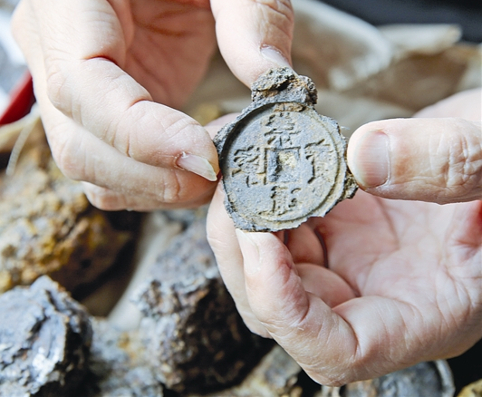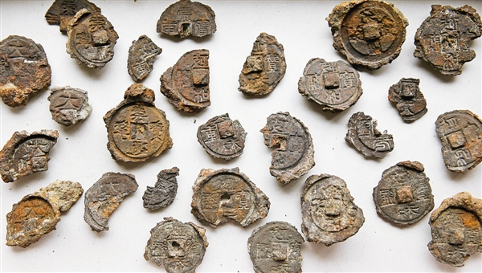Two enthusiasts of the “salt lake culture” were taking pictures of birds at the Yuncheng “salt lake” (运城盐池) when they accidentally discovered a number of clay moulds (模具) used to cast iron coins (铁钱) during the Northern Song dynasty (北宋 960-1127), according to an article published June 16, 2015 by the Yuncheng News Network (运城新闻网).
Yuncheng (运城) is located in north China’s Shanxi Province (山西) and its large salt lake (盐湖) is known as “China’s Dead Sea” (中国死海).
Because of its huge quantities of salt, the salt lake has historically been a valuable resource. Beginning in the Tang Dynasty (唐朝 618-907), a “Forbidden Wall” (禁墙) was built around the lake to protect this important source of tax revenue and to prevent stealing and smuggling.
While the wall no longer exists, it is fortunate that a few old and rare photographs have survived which show the wall’s gates.
This photograph, which is in the archives of the Smithsonian Institution (史密森学会), shows one of the wall’s gates seen by the Robert Sterling Clark expedition in 1908-1909. Also, the undated photograph in this article shows the wall’s middle gate (中禁门).

Two bird photographers at the Yuncheng salt lake discover more than 500 clay moulds used to cast iron coins during the Song Dynasty
The image above shows Mr. Jing Xiaoxiong (景晓雄) and Mr. Zhang Xiaobie (张小别) who are credited with discovering the coin moulds at the Yuncheng salt lake.
They recovered more than 500 moulds although many are in poor condition.
Inscriptions on the coin moulds include chong ning tong bao (崇宁通宝), zheng he tong bao (政和通宝) and zheng he zhong bao (政和重宝) written in seal script (篆体), as well as da guan tong bao (大观通宝) and yuan feng tong bao (元丰通宝).
As can be clearly seen in the above image, the inscription is chong ning tong bao (崇宁通宝) which indicates that this mould was used to cast iron coins during the years 1102-1106 of the reign of Emperor Huizong (宋徽宗) of the Northern Song dynasty.
The beautiful calligraphy used for this coin is known as “Slender Gold” script (瘦金书) and was done by Emperor Huizong himself.
The image above displays 26 of the coin moulds.
The inscriptions are still very distinct.
The inscriptions on the clay moulds in the image above are identified in the article as “chong ning tong bao (崇宁通宝), zheng he zhong bao (政和重宝), zheng he tong bao (政和通宝), and yuan feng tong bao (元丰通宝)”.
However, the inscription on the mould at the far right appears to me to be da guan tong bao (大观通宝).
The discovery of the coin moulds is actually quite puzzling.
Yuncheng was known as Hedong (河东) in ancient times. According to historical documents, Hedong did not have a mint during the Song dynasty. Furthermore, no ruins of any mint have ever been discovered in the area.
The discovery of the clay moulds will encourage further study of Song dynasty ruins in the Yuncheng area in the search for an ancient coin mint.


